How to properly feed dry food to fish in an aquarium?
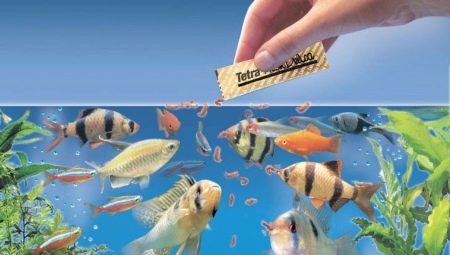
An aquarium with beautiful fish will undoubtedly become a decoration of any home. The priority remains the issue of feeding waterfowl animals. It is not difficult to properly feed the fish in the aquarium with dry food. The main thing is to understand the peculiarities and diet of the inhabitants of an artificial reservoir.

In nature
It is important for aquarium fish owners to know what kind of food their pets eat in their natural habitat. Most are omnivores and eat:
- insects;
- worms;
- seaweed;
- small fish;
- the simplest;
- vegetation.
Having gained knowledge of the approximate diet of certain types of fish, the aquarist will be able to choose the right dry food for his pets.
However, do not forget that each individual has “favorite” products. For example, some fish prefer plant food, while others love to feast on live food.
In this case, observing the life of pets and their individual preferences will help.
There is still debate about how to properly feed aquarium fish: to minimize food or, conversely, to give food in large quantities. However, both can lead to the death of waterfowl pets. It is important to find the "middle ground" and approach the issue of feeding "domestic" fish with all seriousness.
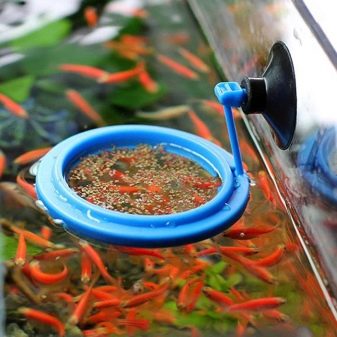
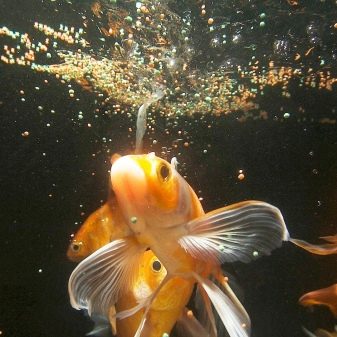
Subtleties of choice
The modern market for goods for ornamental fish lovers offers a wide range of quality food. They can be divided into 4 types:
- alive;
- branded;
- frozen;
- vegetable.
Dry food for aquarium fish serves as a "substitute" for live and plant food. It will not be difficult to buy them - they are widely represented in specialized stores.Inexpensive dry food, consisting of dried daphnia (or gammarus), does not contain essential nutrients.
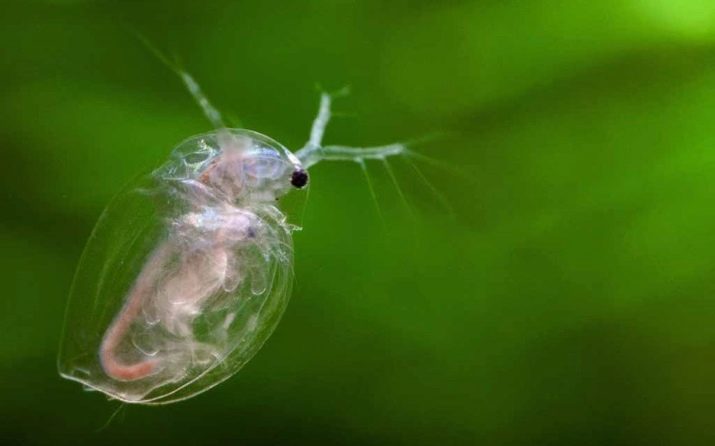
They are just the chitinous shells of insects. Eating exclusively on this food, the fish will get sick and subsequently die.
Dry food can be divided into several types.
- Flakes. Suitable for fish that spend most of the time on the surface of the water. Such food is light and does not sink to the bottom. Suitable for small fish (guppies, cockerels, neons and all types of gourami).
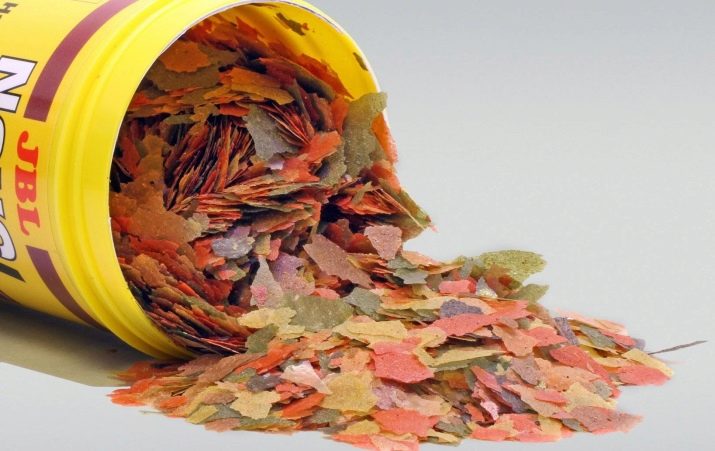
- Crisps. Convenient food for all types of aquarium inhabitants. Chips quickly swell and sink to the bottom. They are relevant for all types of cichlids. For small aquatic pets, the products can be gently broken into small pieces.
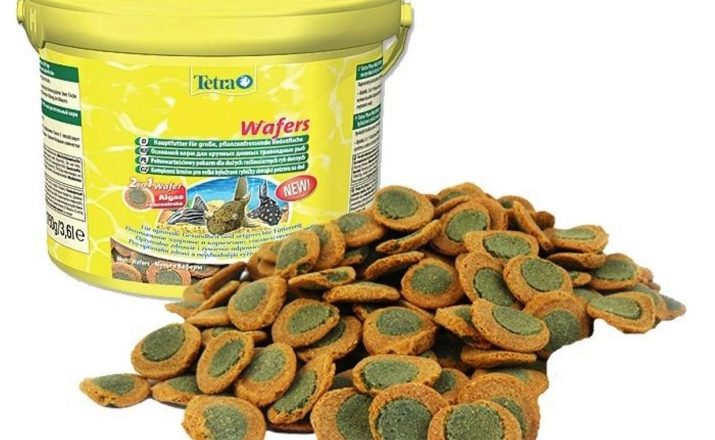
- Granules. Ideal for larger fish, including bottom catfish. The granules quickly sink to the bottom and attract the attention of the inhabitants of the aquarium "thickets" (shrimps and snails).
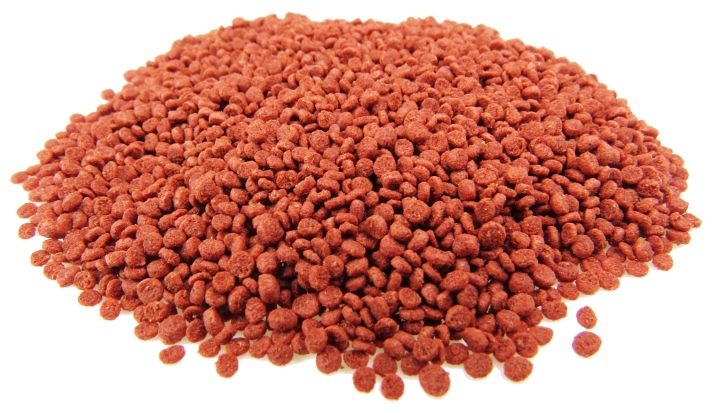
- Pills. Relevant for large species. Dry food in the form of tablets instantly dissolves in water, crumbling into small particles. The tablets are enriched with vitamins and minerals and are great for decorative catfish, shrimp.
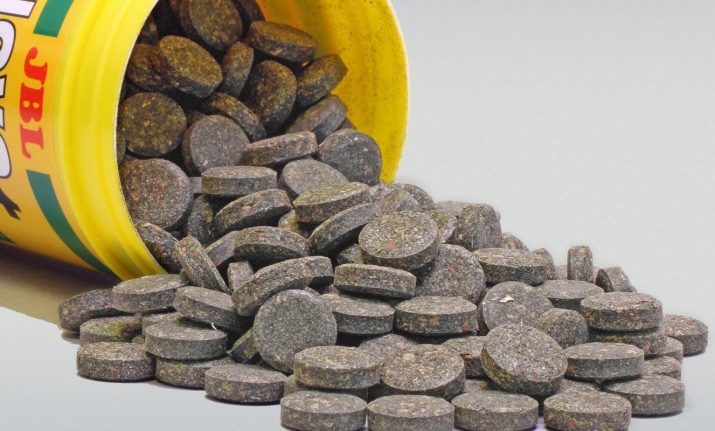
High-quality dry food does not affect the state of water in an artificial reservoir and does not harm green spaces.
For an aquarist, in an artificial reservoir of which different types of fish live, it is best to purchase several types of dry food. They can be alternated or mixed.
Many aquarists distrust industrial products and prefer to feed their pets with handmade food. We are talking about minced meat, which is obtained from boiled shrimp, chicken fillet and sea fish meat. However, homemade food significantly spoils the water in an artificial reservoir. As a result, water changes in the aquarium will have to be done more often.
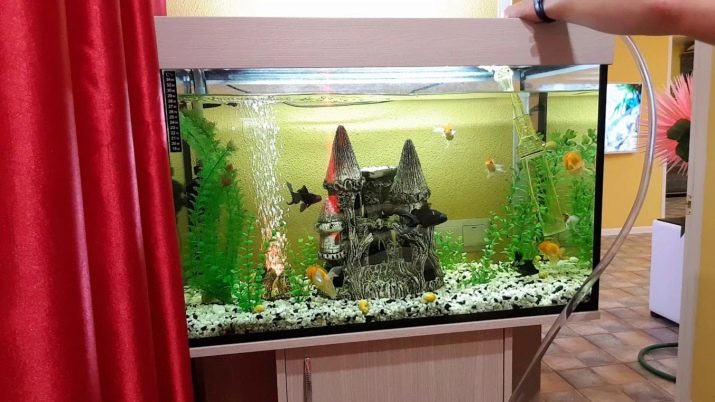
How often to feed?
Most aquarists follow the correct feeding tactics for aquatic animals. Nevertheless, over-caring for fish can lead to dire consequences. Some owners do not spare food for the fish, which leads to their obesity. Surplus feed also begins to rot, turning the aquarium into a real swamp. In addition, many fish, by their behavior, mislead the owner and practically beg for food. Especially such "begging" is inherent in cichlids.
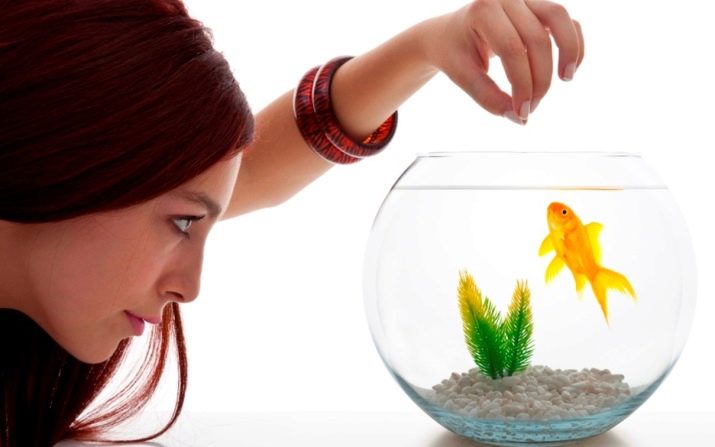
Proper feeding means 2 meals a day (morning and evening). This applies to adult fish. Juveniles feed more often. The serving should be eaten within the first 5 minutes. Ideally, the feed should not sink to the bottom. However, some species of ornamental fish live precisely in the "lowland" of an artificial reservoir. As already mentioned, eating too much will affect the water quality of the aquarium.
If the owner notices that the home reservoir is quickly becoming polluted, then it is advisable to reduce the portion of feed.
An approximate feeding scheme (7 days a week) for aquarium fish looks like this:
- Monday, Tuesday - dry food (2 types);
- Wednesday - live food or bloodworms;
- Thursday and Friday - dry food (2 types);
- Saturday - live food and duckweed;
- Sunday - "hunger strike".
A fasting day will not harm the fish and will have a beneficial effect on the condition of the aquarium.
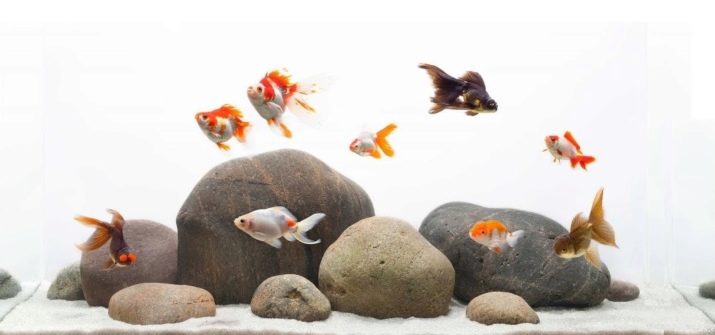
You will learn more about how to properly feed fish with dry food by watching the following video.








